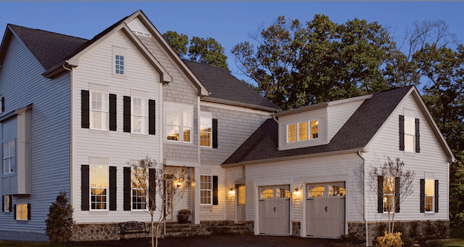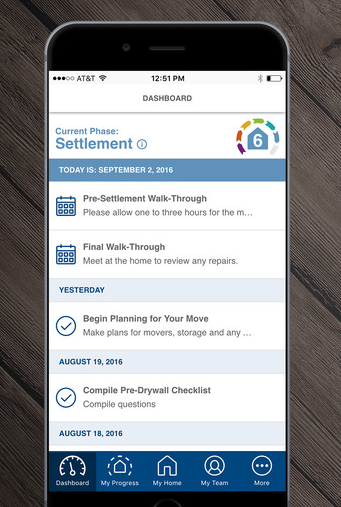What’s happening at Brookfield Residential isn’t based on consumer research or data; it’s part of the company’s culture, and it’s driving a 70% increase in sales.
Gregg Hughes, vice president of sales and marketing for the Brookfield Residential team in Washington, D.C., has been working on several initiatives that help solidify the company’s position as a cutting-edge builder.
This month it launched an app called My Brookfield Home that allows for communication with its buyers on the contract, construction, site plans, and all other aspects of the home buying and owning process.
“As home builders we could all communicate better with buyers,” Hughes says. “This app helps us set expectations correctly.”
The Brookfield D.C. group also collaborated with Amazon to build a fully automated, voice-controlled home using Amazon’s voice service, Alexa. When the home opened in January, there was an unbelievably positive response to it, which Hughes says is an indicator of the next phase of production housing.
Brookfield has implemented ideas from that Smart Home project into others, including wiring homes differently so buyers can take advantage of today’s technology and maybe even future proof for what they will want to use in a few years. This wiring isn’t a premium, the groups says, as the plan is to wire all of Brookfield’s homes this way.
Via the Smart Home project, Brookfield also explored other areas of technology. It created scenes throughout the house to allow buyers to visualize how much easier life could be with voice automation. It also included a refrigerated, air-conditioned drop zone for delivered groceries and packages that offers high security and convenience.
Hughes says the group wanted to anticipate what buyers would want, but it didn’t want to do a lot of consumer research. Rather, insights were gathered organically. So far the results have been outstanding. The company is measuring success in terms of community traffic, web traffic, and, of course, sales. Hughes says that since the Smart Home opened, traffic has been up 80% in those communities and sales have been up 70%. Also, Brookfield’s high-performance home offerings just earned the company a RESNET Cross Border Builder Challenge award.
While Brookfield didn’t base its strategy on consumer research, it had other data up its sleeve. Brookfield was formed by a merger in 2012, which created a cross-national organization that straddles the U.S.–Canada border. This unusual geography is married with an unusual structure as Brookfield is as much a land developer as it is a home builder.
When formed in 2012, the organization wanted to harmonize the company culture from three regionals into one North American company. Through that exercise, Doug Leighton, vice president of sustainability, was tasked with understanding and defining the shared values. What he found was a tremendous culture of innovation.
“Housing has been done the same for 100 years, so it’s a challenge to be innovative. We challenge ourselves daily,” says Bob Hubbell, president of the Brookfield Residential Washington, D.C., business group. “There’s a very active culture of innovation in our company—it’s in our DNA. It allows us to not accept what is status quo.”
Leading the charge on innovation, Hubbell says that the home is behind the technology curve. He is pushing Brookfield to bring it up to speed, to automate homes to fit the lifestyles of the buyer. He believes that this focus on innovation sets Brookfield apart and gives its buyers a leg up.
Under Leighton’s leadership, Brookfield started an internal initiative called Sustainable Brookfield to promote more efficient use of resources and energy, create more livable places, and focus on innovation and community. Leighton explains that it was a staff initiative across all 12 offices. He started by appointing a steering committee of senior executives and ambassadors for innovation.

Champions embrace the culture of innovation at Brookfield.
With this initiative, Leighton also wanted to define sustainability. He arranged workshops in every office to look at what the focus of sustainability would be for Brookfield. They started with 32 issues and narrowed it down to 10, which they then divided it into four pillars:
1. Creating livable places—elements of social sustainability, foster sense of community
2. Using resources efficiently—environmental, using less energy, water efficiency
3. Investing in communities—philanthropy, investment in infrastructure
4. Valuing people and partners—ethical business partners

Brookfield is merging technology and sustainability in their homes.
Stemming from this initiative, Brookfield plans to bring fiber optic into its homes in California, which will result in more social connectivity and allow better speed and connectivity for home offices. Not only does it offer these technological benefits, but it also contributes to the company’s green initiatives by allowing the homes to use less energy.
Leighton wants to continue to enhance business with innovation. He says that by creating new products and processes, the market will put a premium on homes built by Brookfield. To be successful, the Brookfield team collaborates with other innovative companies; so far, some of its most successful projects have come from partnerships with Apple and Amazon. “We like to partner with other organizations that will deliver value,” Leighton says. “We can’t do it alone.”



